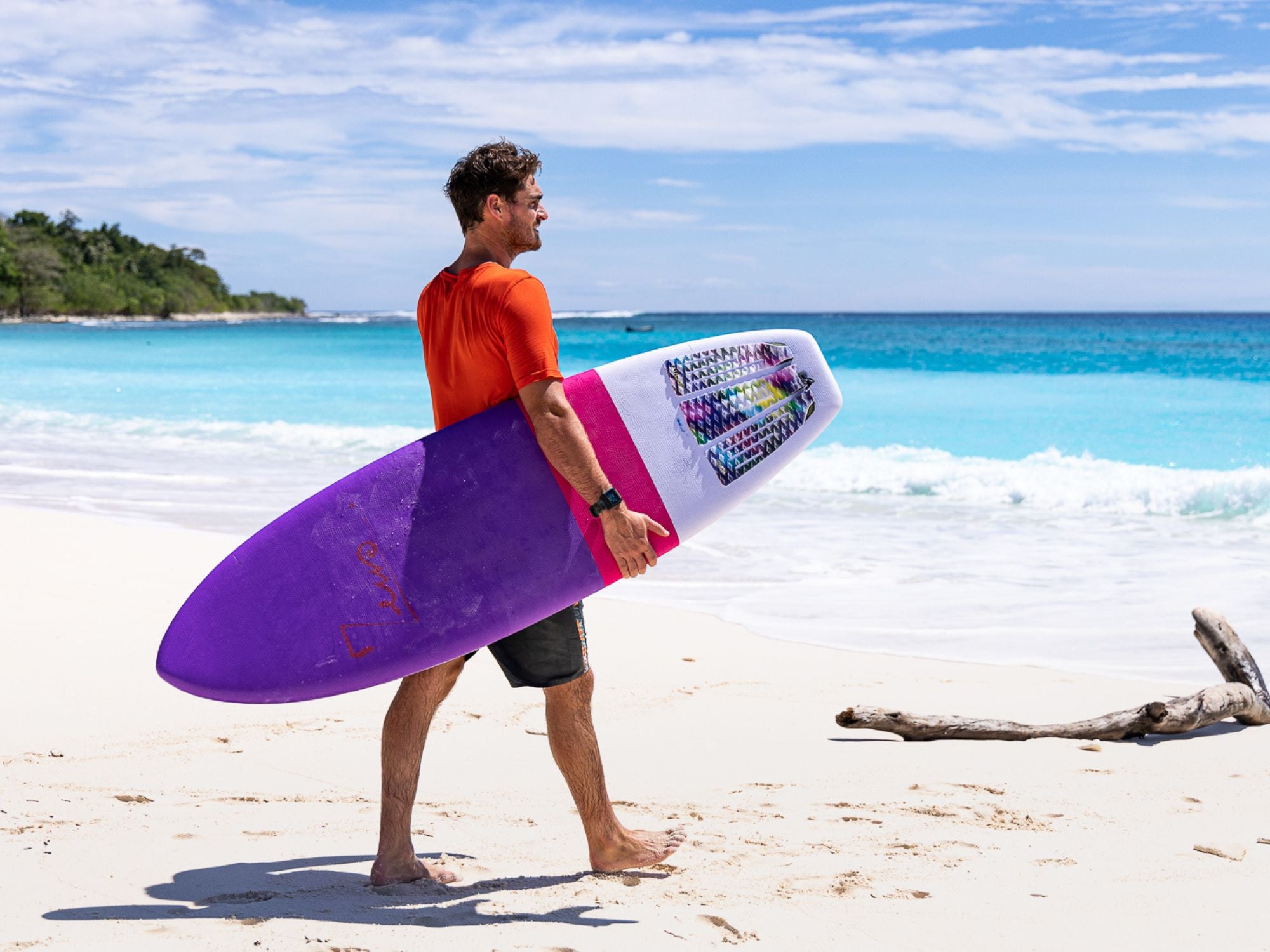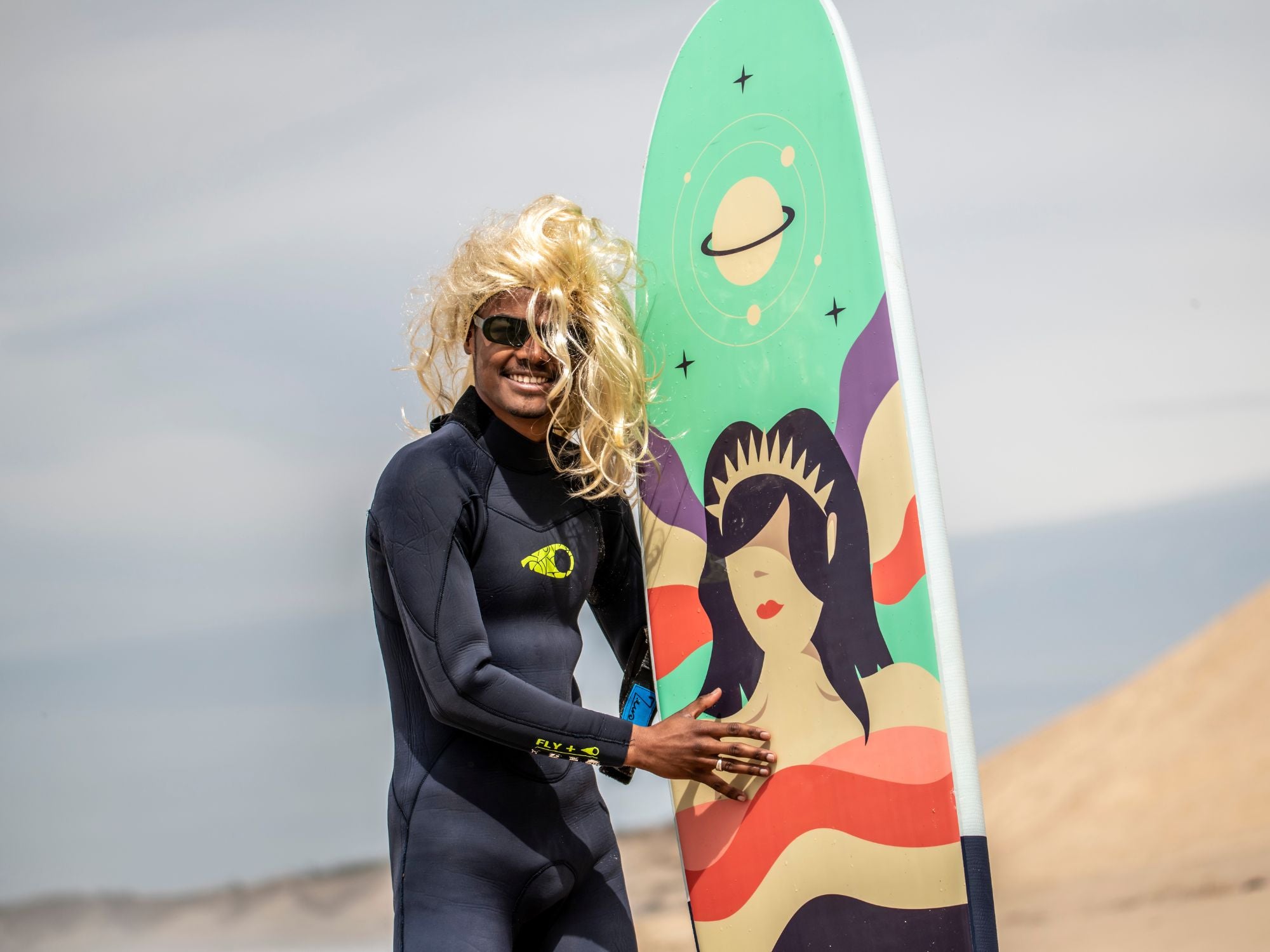The take-off technique in surfing: how to get up like a pro on your board 🏄♀️💪
Hey there, budding surfers! Are you tired of crashing miserably every time you try to stand up on your board?
Don't panic, today we're going to reveal all the secrets to successfully performing your take-offs like the pros.
With Zeus' advice, you will finally be able to leave the shrimp clan to join the kings of the slide. So, ready to take off? Let's go! 🚀
Key points to remember
- The take-off is the crucial moment when you move from lying down to standing on your board.
- There are 3 key steps to a successful take-off: good timing, good positioning on the board and good posture.
- The key is to repeat the right actions until they become automatic.
- To improve, practice the take-off on the beach before going into the water.
- A good take-off requires balance, coordination and speed of execution.
Choose the right timing ⏰
The first secret to a successful take-off is to choose the right moment to get up. Too early, and you won't have enough speed to take off. Too late, and the wave will have already passed you. You have to find the perfect timing, the one that allows you to catch the wave just as it starts to lift you up.
To really feel this moment, watch the wave coming towards you. When you see the lip forming and you feel the back of your board lifting, that's the signal. At that moment, give 2-3 powerful strokes to gain speed, then launch your take-off. With practice, you will be able to instinctively spot the breaking point of the wave.
At first, it's normal to get caught out and miss a few waves. Don't get discouraged, practice makes perfect! With practice, you'll eventually develop the king's timing.
Find the right investment 🎯
Once you have the timing right, you also need to find the right position on your board. This is essential to successfully stand up without losing your balance. The secret is to place your hands in the right place to propel yourself when you push off.
The most common technique is to place your hands on either side of your torso, roughly at pectoral level. Your hands should be flat on the board, with your fingers spread out to get a good grip. Avoid placing them too close to the nose or too close to the tail of the board, as this will throw you off balance when you push off.
A variation for larger boards is to move your front hand (the one in the direction of the wave) a little more towards the nose. This helps to orient the board in line with the wave at the moment of take-off. Test both techniques to see which one works best for you.
Adopt the right posture 🧘♂️
Now that your hands are well placed, think about your overall body posture. The goal is to be able to stand up in one smooth, coordinated movement. To do this, you need to quickly chain together several actions:
- As your arms push to lift your torso, quickly bring your back leg under you. The back foot comes to rest roughly in the middle of the board.
- Continue pushing through your arms to bring your front foot under your chest, slightly offset to the front. Both feet are now on the center line of the board, shoulder-width apart.
- Finish the push on your arms while looking forward and straightening your torso. Your arms straighten, your legs too. Now you are standing! Remember to keep your head up and your knees slightly bent to keep your balance.
- Take your hands off the board and open your arms wide to stabilize your position. You can finally enjoy the ride! 🏄♂️
Classic mistakes to avoid 🙅♂️
- Standing up too slowly and getting stuck in a squat position.
- Placing your feet incorrectly and standing sideways on the board.
- Look at your feet instead of where the wave is going.
- Keep your arms close to your body after the take-off instead of opening them to balance.
Take-off FAQ 🙋♀️
Q: I'm afraid of hurting myself when I land on the board, any advice?
A: To limit the risks, remember to spread your feet well when standing up. This will prevent you from falling directly on the nose or tail of the board. And if you really feel like you're going to fall, don't hesitate to jump to the side instead of risking contact with your board.
Q: What size board should I choose to make take-off easier?
A: Long, voluminous boards are more stable and therefore easier to successfully take-off. This is ideal for learning! For beginners, we recommend starting on a board that is at least 7' (about 2m10) long and 21" (53 cm) wide.
You can then gradually reduce the size as you gain mastery.
Q: How to properly measure your power in arm thrusts?
A: It's all about balance! You have to push hard enough to bring your center of gravity above the board, but not too hard to avoid throwing yourself forward. It's best to push a little harder on your back hand to counteract the movement of the wave which will tend to bring you back towards the back of the board. Again, it's by repeating that you'll find the right balance.



